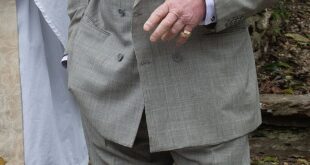Whatever the other glories of the second Elizabethan age, it included a period in the 1960s and 1970s when British art entered a black hole and stayed there. There were exceptions: Lucian Freud, Henry Moore and David Gentleman, in the visual arts; the odd good feature film, mostly by Lindsay Anderson. The documentary output was first class, and the television of the period far superior to now. Yet, for the best part of 20 years, just about every building put up in this country was cheap and nasty. Worst of all, the calibre of everyday objects declined.
For generations, people had been used to coins and stamps having aesthetic as well as monetary value – and for the first 14 or 15 years of the late Queen’s reign, stamps bore a dignified, glamorous photographic portrait by Dorothy Wilding. There were several different designs, usually with oval frames, and they were charmingly ornate. The coinage bore an effigy of the Queen by the sculptor Mary Gillick. It, too, was based on Wilding’s photographs, though Gillick deliberately, and successfully, romanticised the effigy with a laurel crown.
In 1960, a lavish portrait of the Queen appeared on the pound note, and on the 10-shilling note the year after. Designed by Richard Austin, they were criticised for being a poor likeness that made the Queen look unduly stiff and formal. These criticisms were unfair, and the notes now look like miniature masterpieces. So too do the five and 10 pound notes, released in 1963 and 1964 and designed by Reynolds Stone. Generally, banknotes retained high quality design for the rest of Queen Elizabeth’s reign, perhaps because of the decision to retain the Queen’s portrait as their dominant feature. The same cannot be said for coins and stamps.
The coin designs of 1953 were, for the silver coinage, generally by Edgar Fuller and Cecil Thomas (though the penny retained the Britannia reverse used for George VI). They were predominantly heraldic and, although simple compared with earlier in the century, still ornate. That ended in 1967, when Christopher Ironside won a competition to design the decimal coinage. These were simplistic to the point of blandness, in keeping with the charmless spirit of the times and also, perhaps, with the decline of the value of the currency. The Gillick portrait was replaced by Arnold Machin’s, which also began to adorn postage stamps where it has continued to appear to this day. Queen Victoria’s image never changed on her stamps, and the same principle was adopted for Elizabeth II. Although philatelists rave about the Machin design it has, for me, all the charm of a 1970s bus shelter. It ought to have gone decades ago.
The late Queen took a close interest in her stamps, and one can only presume her innate good manners stopped her from rejecting outright some of the horrors now produced by the Royal Mail as so-called “special” stamps – they used to be called commemoratives, but all they commemorate now is the Royal Mail’s determination to make money out of them.
Source link


